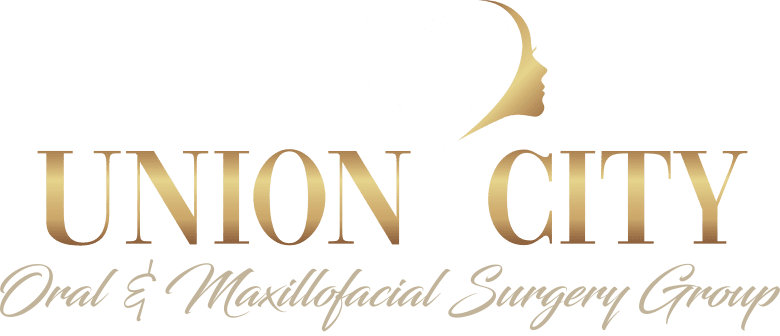Occlusal adjustment, also known as bite adjustment, is a dental procedure that involves precisely modifying the biting surfaces of teeth to achieve proper alignment and even distribution of pressure when you bite down. This specialized treatment aims to eliminate interferences in your bite pattern, balance the force applied across all teeth, and create harmony between your teeth, jaw joints, and supporting structures. When your bite is properly aligned, it can alleviate pain, reduce tooth damage, and improve overall oral function.
At Legacy Oral Surgery Group, we provide comprehensive evaluations to determine if occlusal adjustment might benefit your specific situation. Our experienced oral surgeons use advanced diagnostic techniques to identify bite imbalances that could be causing discomfort or damage. With offices in Union City and Elizabeth, our team offers expert care focused on improving both function and comfort for patients throughout New Jersey.
Understanding Occlusal Adjustment
Occlusal adjustment is a conservative procedure focused on correcting bite irregularities through minimal tooth modification. Before recommending this treatment, our doctors perform a thorough examination to identify specific issues that might benefit from adjustment.
The Procedure
During an occlusal adjustment, your dentist or oral surgeon makes precise modifications to the tooth surfaces. This typically involves:
- Using special marking paper to identify points of excessive pressure
- Carefully removing small amounts of enamel from specific areas using fine polishing instruments
- Checking and rechecking your bite after each adjustment
- Smoothing and polishing the modified surfaces for comfort
The procedure is usually performed with local anesthesia if needed, though many patients find it comfortable without numbing. Most adjustments can be completed in one or two appointments, depending on the complexity of your case.
Benefits of Proper Occlusion
When your bite is properly balanced, several important benefits emerge. Your teeth make contact simultaneously when biting down, distributing pressure evenly across your dental arch. This balance helps prevent excessive wear on individual teeth and reduces stress on your temporomandibular joints (TMJ).
Proper occlusion also allows for efficient chewing and speaking without interference or discomfort. Many patients report improved comfort immediately following adjustment, with continued improvement as muscles adapt to the new bite pattern.
When Occlusal Adjustment Is Necessary
Several conditions and symptoms may indicate the need for occlusal adjustment. Understanding these signs can help you recognize when to seek evaluation from an oral surgeon.
TMJ Disorders
Temporomandibular joint disorders often involve bite irregularities that place excessive stress on the jaw joints. Symptoms may include jaw pain, clicking or popping sounds, limited opening, and headaches. When these symptoms stem from occlusal interferences, adjustment can provide significant relief by reducing abnormal stress on the joints.
In some cases, occlusal adjustment is combined with other therapies such as night guards or physical therapy to comprehensively address TMJ disorders.
Tooth Damage and Wear
Excessive or uneven tooth wear often signals bite problems. When certain teeth receive disproportionate pressure during biting and chewing, they can develop:
Flattened cusps or incisal edges Cracked or fractured enamel Notches near the gumline (abfractions) Sensitivity or pain when biting
Occlusal adjustment can redistribute bite forces more evenly, preventing further damage and protecting your remaining tooth structure.
After Dental Restorations
New dental work such as fillings, crowns, or bridges can sometimes alter your bite. Even small changes in tooth height or contour may create interferences that affect comfort and function. Adjustment ensures these restorations integrate harmoniously with your natural bite.
Similarly, patients who have completed orthodontic treatment may benefit from fine-tuning their occlusion to perfect their bite relationship after teeth have been moved.
Alternatives to Occlusal Adjustment
While occlusal adjustment is often effective, it’s not always the first or only approach to bite-related problems. Your oral surgeon may recommend exploring other options based on your specific situation.
For patients with minor or intermittent symptoms, a custom night guard or splint may provide protection while you sleep. This approach can be particularly helpful for those who clench or grind their teeth at night.
In cases where tooth alignment is significantly compromised, orthodontic treatment may be necessary to move teeth into proper position before any minor adjustments are made.
Seeking Evaluation for Occlusal Issues
If you’re experiencing symptoms such as jaw pain, headaches, or noticeable tooth wear, a comprehensive evaluation is the first step toward determining if occlusal adjustment might help. During your consultation, we’ll carefully assess your bite pattern, jaw function, and any signs of damage or dysfunction.
Advanced imaging techniques may be used to evaluate your jaw joints and bone structure, providing a complete picture of your occlusal relationship. Based on these findings, we can recommend the most appropriate treatment approach for your situation.
Contact Legacy Oral Surgery Group for Expert Occlusal Care
At Legacy Oral Surgery Group, our family-owned practice brings decades of combined experience in diagnosing and treating complex oral health issues, including occlusal disorders. We pride ourselves on taking a patient-centered approach, focusing on conservative treatments that preserve your natural tooth structure while improving function and comfort.
If you’re experiencing symptoms that might indicate occlusal problems or have questions about bite adjustment, we’re here to help. Contact Legacy Oral Surgery Group today at (201) 601-9262 or complete our contact form to schedule a consultation with our experienced team.


